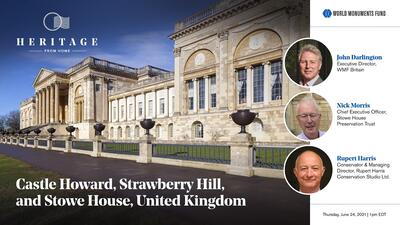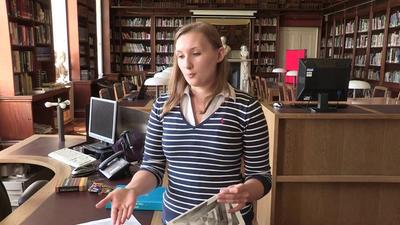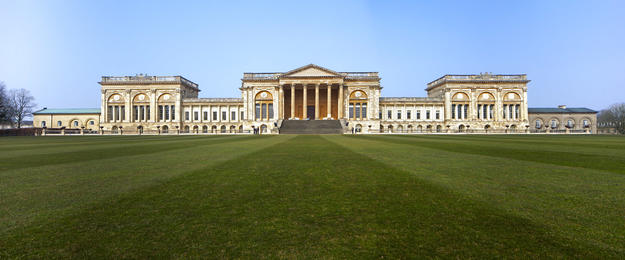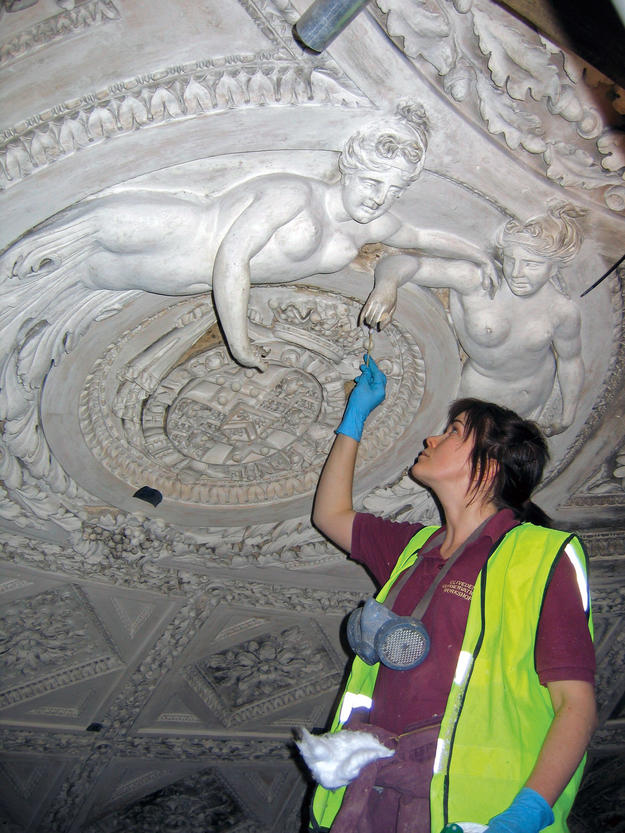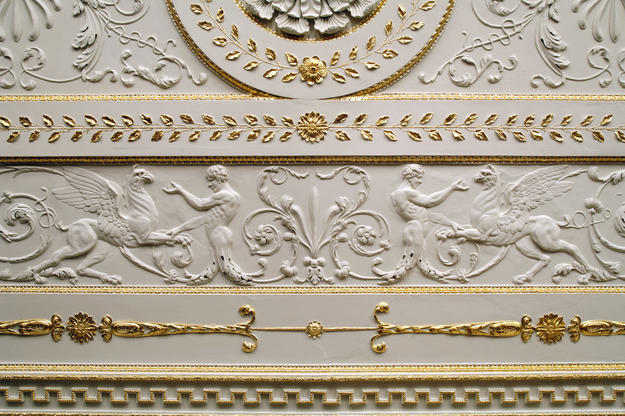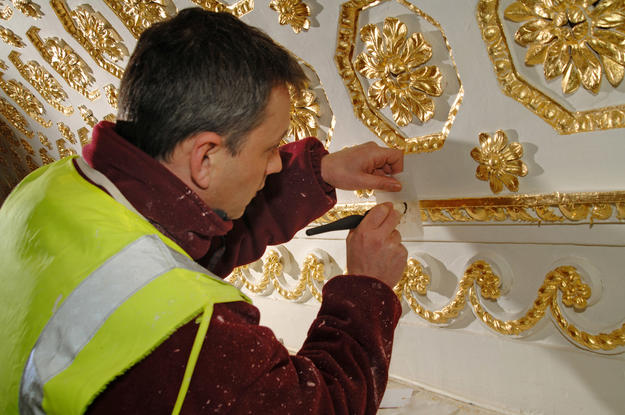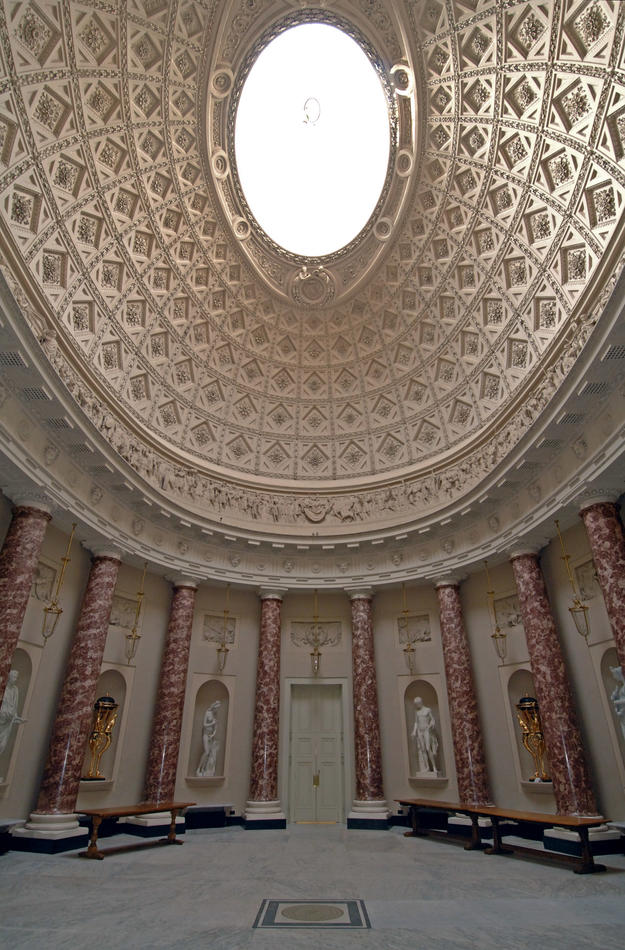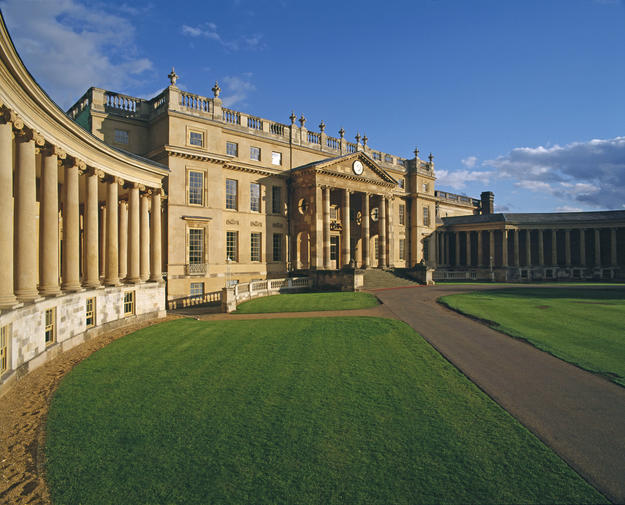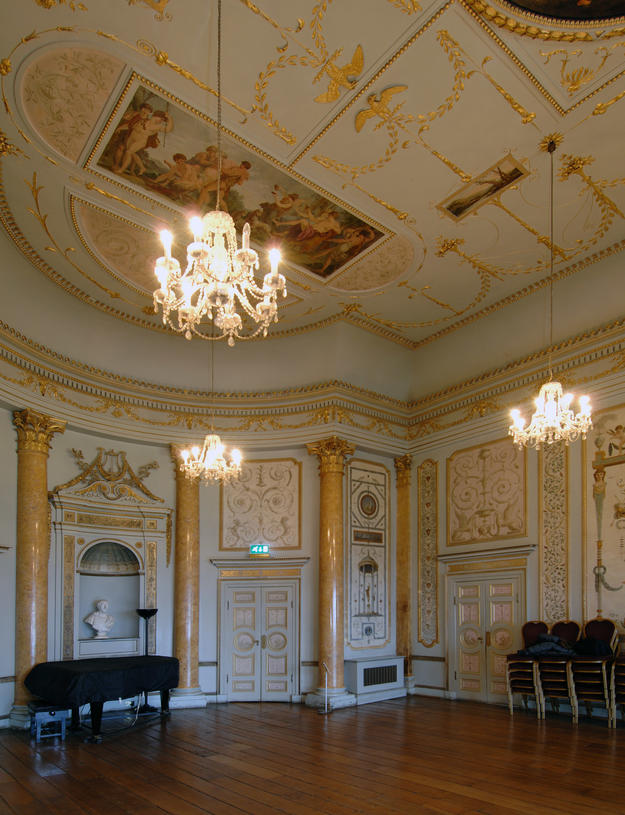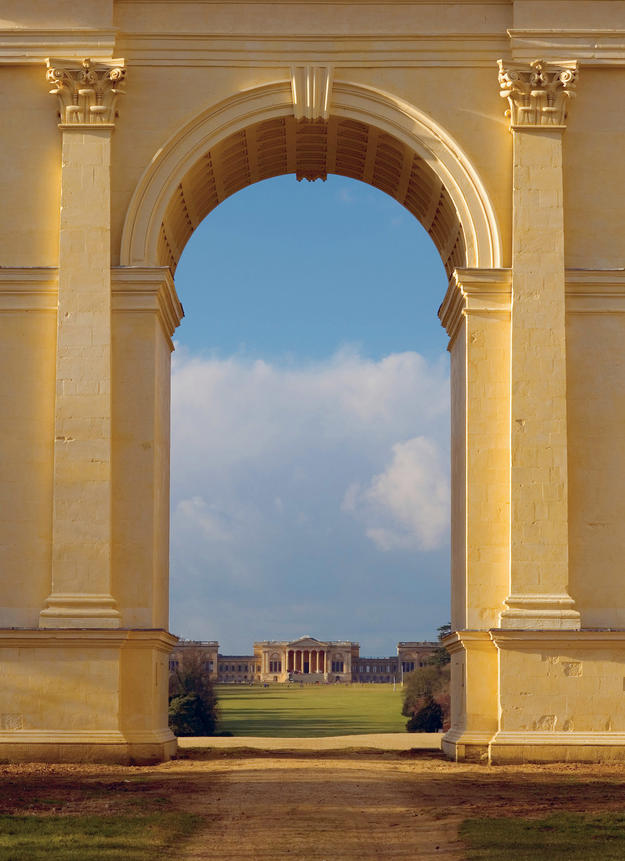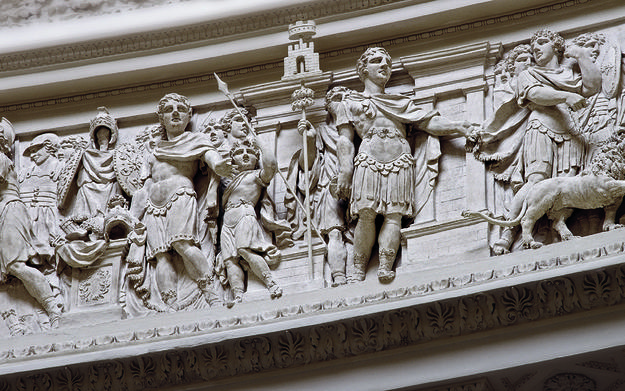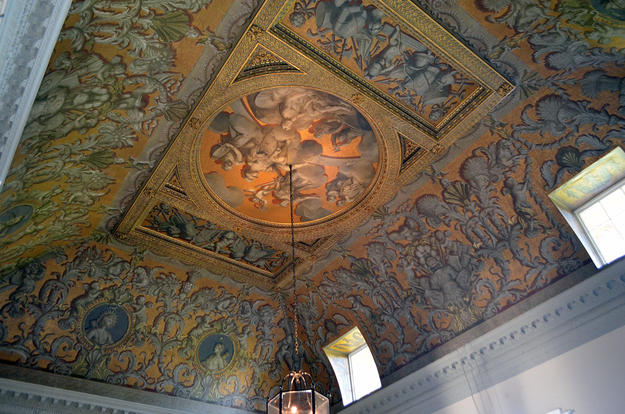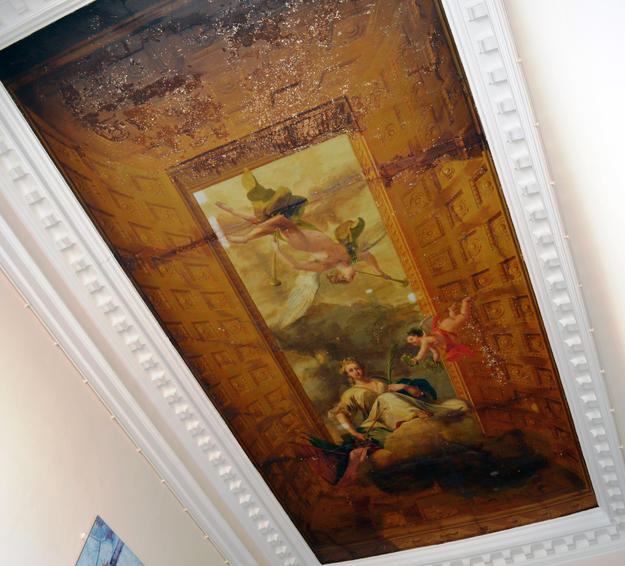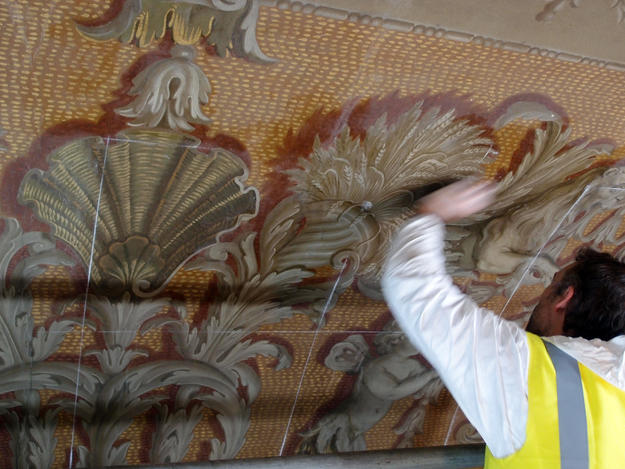Stowe House was originally the country seat of the Temple-Grenville family. The first house at the site was built between 1677 and 1683 for the third baronet, Sir Richard Temple. Over the next century, the family significantly altered and enlarged both the house—a Georgian ducal nearly 1,000 feet wide—and its elaborately designed gardens. Multiple famed British architects and landscape designers including John Vanbrugh, James Gibbs, Robert Adam, John Soane, William Kent and Capability Brown helped transform Stowe into a site admired and imitated by many.
Stowe House represents an immense resource of craftsmanship, a former hotbed of eighteenth-century politics, and a story of family tragedy. The Temple-Grenville family built a magnificent art collection at the house, and displayed it in continually updated and improved interiors. However, a combination of increasing expenditure and decreasing responsibility eventually bankrupted the family. In 1827 the first Duke of Buckingham and Chandos closed Stowe House and took to a yacht on the Mediterranean, over a million pounds in debt. The family tried to sell off much of their art through a major auction in 1848, but to little avail. The last time Stowe came to the auction block was in 1922, when it was saved from almost certain demolition through its transformation into Stowe School. The school opened in May 1923 and has been the building’s custodian through an age renowned for the wrecking of Britain’s country houses. The Stowe House Preservation Trust was formed in 1997 with the aim of restoring and preserving the house. The trust has had enormous success in carrying out repairs to the façades and roofs. In addition, the National Trust has worked to restore the landscape gardens with its temples and follies.
2002 and 2004 World Monuments Watch
Stowe House was included on the 2002 and 2004 World Monuments Watch, whereupon it received funding for extensive conservation. The Robert W. Wilson Challenge to Conserve Our Heritage supported the restoration of multiple spaces in Stowe House, including the central Marble Saloon and the library. The repair of decorative treatments in the Music Room, the Egyptian Hall, the North Hall, the Dining Room, and the East Corridor and Staircase was also supported. The Paul Mellon Estate supported the conservation of the State Music Room, one of the finest late-eighteenth-century spaces in Britain, as well as a skills training program that took place at the site. In 2013 two eighteenth-century lead lions returned to their original location at the southern entrance to the house after a long-term lease deal brokered with Blackpool, the city that had acquired the statues decades earlier in a 1921 auction. The return of the lions and the installation of some 30 spun copper urns marked the completion of exterior restoration work at Stowe.
In 2015, a visitor welcome area and interpretation center opened to the public at Stowe House. Interior restoration work was completed in late 2016.
Videos
